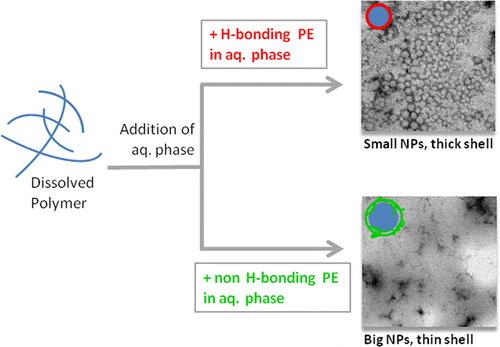
February 2013
Surface functionality as a means to impact polymer nanoparticle size and structure.
Schneider, J.; Jallouk, A. P.; Vasquez, D.; Thomann, R.; Forget, A.; Pino, C. J.; Shastri, V. P.
Langmuir 2013, 29 (12), 4092–4095
When polymeric nanoparticles (NPs) are formed by nanoprecipitation, which is a nucleation–growth process, the control over size requires changing the polymer concentration or solvent composition. Here, we demonstrate that the NP size can be controlled independent of polymer variables by introducing a polyelectrolyte (PE) in the aqueous phase. PEs that exhibit hydrogen bonding (H-bonding) yield a reduction in NP size, whereas PEs that do not possess this characteristic promote the formation of larger NPs. The observed effect can be attributed to the formation of a diffusional barrier around the NP in the form of a dense shell. This principle of controlling NP size is not limited to polymers and can also be employed in the production of lipid NPs.